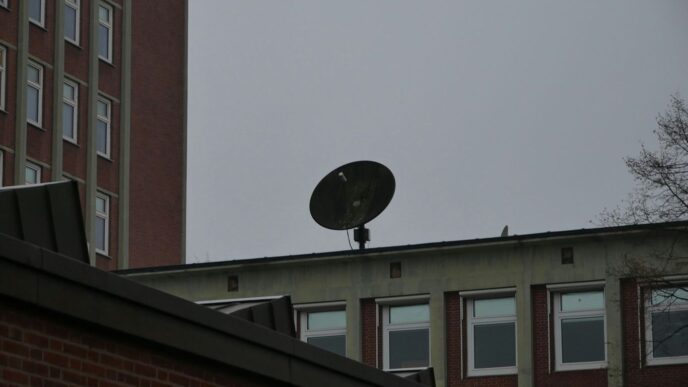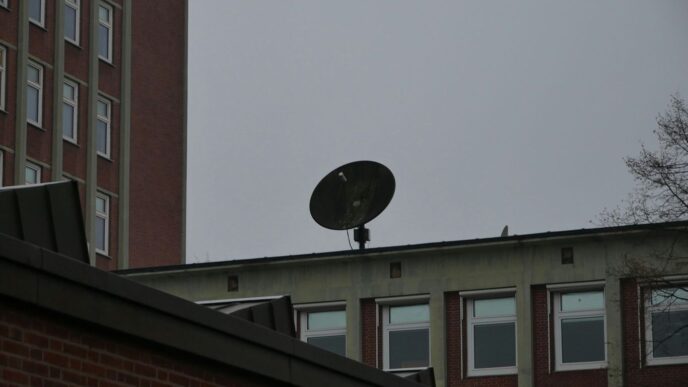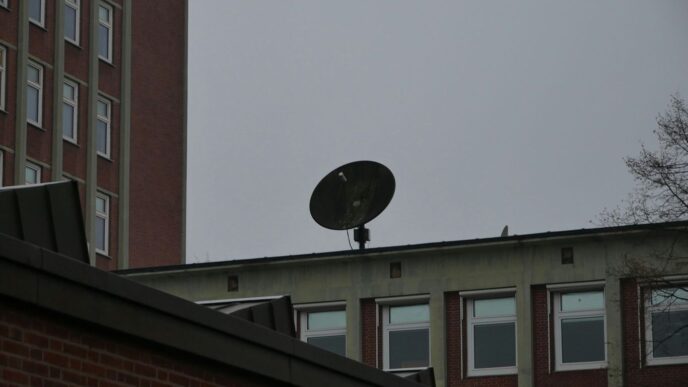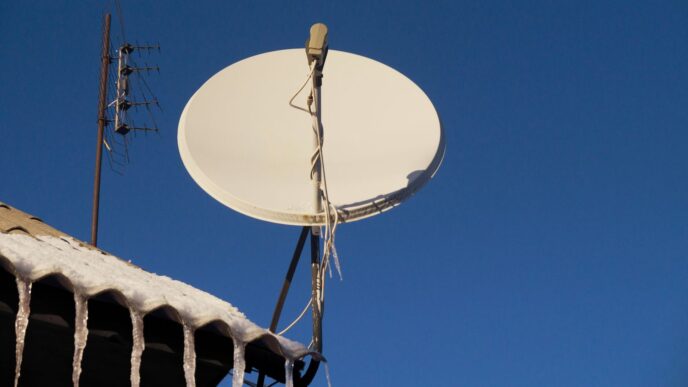Picking the best cellular service in 2025 can feel like a maze. With so many options, plans, and new tech, it’s easy to get lost. Maybe you just bought the latest phone or maybe you’re tired of dropped calls and sky-high bills. Either way, figuring out what actually works for you is what matters. This guide will help you sort through things like coverage, data, cost, family plans, perks, and even how to switch providers without losing your mind. Let’s break it down so you can find the best cellular service for your needs—without all the hassle.
Key Takeaways
- Check which carriers have the strongest signal and best coverage where you live and work before you commit.
- Pick a data plan that matches your actual usage—don’t pay for more than you need, but leave room for busy months.
- Compare costs between big carriers and smaller brands (MVNOs) that use the same networks, since you might save a lot.
- Families and groups can usually get better deals by sharing plans instead of buying separate lines.
- Look for extras like travel features, streaming perks, or special discounts for seniors, students, or first responders.
Evaluating Coverage and Network Performance

When you’re shopping for a new phone plan in 2025, it’s easy to get distracted by flashy prices and bundles. But none of that matters if your signal stinks where you actually use your phone. Coverage and network quality still come first, no matter what.
Assessing Signal Strength in Your Area
- Check official coverage maps on carrier websites for your home, work, and any places you visit on a regular basis. These maps are a decent starting point, but real-world experience can be different.
- Ask people nearby—coworkers, neighbors, your favorite coffee barista—about the networks they use and how well those actually work.
- If you’re serious (or picky), you could take advantage of free trial periods offered by many providers. This lets you basically “test-drive” a network. T-Mobile, for example, is known for a 3-month Network Pass, so you can see how their 5G coverage works in your neighborhood before you commit.
Comparing 5G Availability and Speed
It’s not all about bars anymore—speed matters a lot. Most new plans tout “5G,” but real 5G experiences can still be spotty, and they may differ between carriers. Here’s a quick look at how the major networks stacked up in 2025 according to third-party speed tests:
| Carrier | Median Download Speed (Mbps) | People Covered by 5G | Land Area Coverage |
|---|---|---|---|
| T-Mobile | 274.4 – 371.4 | 332 million | 2 million sq mi |
| Verizon | 133.9 – 192.1 | 280 million | 99% of population |
| AT&T | 129.3 – 168.7 | 295 million | 58% of land area |
- T-Mobile pretty much wins for 5G reach and high speeds in most cities, but Verizon and AT&T usually perform better in rural or tricky locations.
- If you only care about raw speed, check speed test results for your city (Ookla, RootMetrics, Opensignal all publish these stats). Your friend’s 5G in downtown LA? Not the same as your aunt’s in Kansas.
Understanding the Role of MVNOs
Mobile Virtual Network Operators (MVNOs) are the weird cousin of the big carriers—they use the big guys’ networks but offer cheaper plans, often with fewer extras.
- MVNOs like Mint Mobile, Visible, and Google Fi “ride along” on major networks (T-Mobile, Verizon, AT&T), so your coverage is basically the same as those parent carriers in most cases.
- During busy times, though, MVNO customers might get bumped to slower speeds since the main network’s own subscribers get first dibs.
- Some MVNOs use more than one parent network. Google Fi, for example, can switch between T-Mobile and US Cellular, automatically picking the best signal for you. This is great if you travel or live near coverage borders.
- Just remember, with MVNOs you usually sacrifice things like premium perks or high-speed data caps in exchange for a lower monthly bill.
No matter what, take some time to check both the numbers and actual experiences from real folks. A little research up front can save you a year of spotty calls and slow loading when you least expect it.
Identifying the Right Data Plan for Your Usage
Picking a data plan in 2025 isn’t as easy as it used to be. Plans now come with all sorts of fine print: priority data caps, different streaming limits, and those dreaded slowdowns once you hit a certain number. Before you pull the trigger on a plan, there are a few things you should nail down so you don’t end up frustrated mid-month. Tracking your typical data usage from your current carrier’s account portal is the smartest move to avoid overpaying or running out.
Choosing Between Unlimited and Tiered Data
Unlimited plans are everywhere now, and for most people, they’re the default choice. In the past, these plans were rare, but carriers have pushed them hard—often because "unlimited" comes with some asterisks. For truly light users, tiered data can make sense, but you’ll need to be careful to avoid expensive overage charges, and you likely won’t get full 5G access. For example:
| Plan Type | Monthly Price (1 line) | Data Cap | Priority Data | Hotspot Limit |
|---|---|---|---|---|
| Unlimited | $60-$90 | None* | 50-100GB | 15-60GB |
| Tiered (4GB) | $50 | 4GB | 4GB | Included |
| Light MVNO | $15-$30 | 5-20GB | All Data | Included |
*Unlimited sometimes means slower speeds after a ‘priority’ threshold (check carefully!). For a solid experience without too many caveats, T-Mobile’s Essentials Saver plan gives 50GB of high-speed data before any slowdowns set in.
Options for Light, Moderate, and Heavy Users
Here’s how you can roughly classify yourself:
- Light User (under 5GB/month): You mostly check email, browse, a bit of social media. One of the smaller MVNO plans, which often cost less than $30, could do the trick.
- Moderate User (5GB–20GB/month): You stream some music, watch occasional videos, and use maps regularly. A mid-range plan (10–20GB or step-up unlimited with lower priority data) fits well.
- Heavy User (20GB+/month): You stream HD/4K video and game frequently or hotspot laptops. High-priority unlimited is your best option; expect to pay more but get better speeds and high caps on premium data.
Most people fall into the moderate range, but if you travel or work remotely, you might need to bump up to heavy.
Hotspot and Tethering Limits Explained
Almost every unlimited plan comes with a hotspot data allowance. Once that’s used up, speeds slow down a lot (think early-2000s slow). Here’s what you should check before committing:
- How much full-speed hotspot/tethering data comes with the plan? (It widely ranges: some offer just 5GB, others up to 60GB.)
- What happens after the limit is reached? Usually, you’re throttled to 600 Kbps or lower—enough for email, but not much else.
- Are there device restrictions? Some plans won’t let you use certain devices as hotspots.
In short, don’t assume ‘unlimited’ means everything is fast forever. Go through the fine print, look at your actual data use, and don’t hesitate to use trials or low-cost prepaid plans to see if things fit before you lock in. That’s how you avoid headaches and surprises.
Balancing Cost and Value for the Best Cellular Service
Choosing the right cell phone service is about more than just the lowest price tag—you want a plan that actually fits your lifestyle and still feels like a good deal at the end of the month. There’s no point in saving a few bucks if you’re stuck with slow data or limits that just don’t work for you. Let’s break down how to stretch your dollar without sacrificing what you actually need.
Finding Low-Cost Carriers and MVNO Deals
You don’t have to pay top-shelf prices to get reliable coverage these days. Instead of going with a major carrier, lots of people are turning to MVNOs—these companies rent space on the big networks (like Verizon, AT&T, and T-Mobile) and usually offer plans for less. Some well-known low-cost options are Mint Mobile, Visible, Cricket Wireless, and Boost Mobile. Deals change often, but MVNOs can give you the same coverage for a fraction of the price.
Here’s a quick look at a few popular low-cost plans:
| Carrier | Network Used | Unlimited Data (1 line) | Taxes Included? |
|---|---|---|---|
| Mint Mobile | T-Mobile | $30 | No |
| Visible | Verizon | $25-$45 | Yes |
| Cricket | AT&T | $55-$60 | Yes |
| Boost Mobile | Dish/AT&T/T-Mobile | $25 (Basic) | Yes (some plans) |
Thinking about international options or looking to compare more carriers? This detailed overview of cell phone plans might help make your decision easier.
Differences in Prepaid vs. Postpaid Plans
Choosing prepaid or postpaid changes how you pay and what you get:
- Prepaid plans: Pay up front each month; often cheaper and no credit check.
- Postpaid plans: Pay after use; tend to come with perks like priority data and may require a contract or credit check.
Some perks only show up with postpaid—like faster data during busy hours or bigger device discounts. On the other hand, prepaid is great if you want to keep things month-to-month and never worry about surprise charges.
Taking Advantage of Special Discounts
To get the most out of your money:
- Watch for seasonal promos. Carriers love offering deals around back-to-school, holidays, or special events.
- Check eligibility for group discounts. Students, seniors, military members, and first responders can often snag exclusive offers.
- Bundle where you can. If your carrier also offers internet or TV, ask if there’s a bundle deal that will save you cash.
Remember, value isn’t just about what you pay each month—it’s whether you feel satisfied with your plan and aren’t paying for stuff you’ll never use. Always read the fine print, and don’t be afraid to switch if you find something that suits your situation better.
Selecting the Best Cellular Service for Families and Groups
When you’re shopping for cell service for the whole family or a group, things get complicated fast. It’s not just about how much each person uses their phone; you also have to think about sharing data, monthly costs, and whatever perks the carrier throws in. Choosing a good plan can save you real money and a lot of headaches down the line. Let’s break down what you need to know.
Family and Multi-Line Plans Compared
Most carriers push family or group plans because they want you to bring more people on board. But what’s actually different about these plans? Usually, you’re getting:
- A lower price per line as you add more lines (sometimes the fourth or fifth line is almost free)
- The option to share a pool of data, or everyone gets unlimited data
- The ability to manage all lines under one account (so you just get one bill)
Here’s a quick look at sample pricing for a family of four in 2025:
| Provider | Monthly Total (4 lines, unlimited data) | Price Per Line | Extras Included |
|---|---|---|---|
| Verizon | $140 | $35 | Apple Music, Disney+, hotspot |
| T-Mobile | $125 | $31.25 | Netflix (1 screen), Scam Shield |
| AT&T | $135 | $33.75 | HBO Max, roaming perks |
| Mint Mobile | $90 | $22.50 | None (but very low price) |
| Visible | $100 | $25 | No extras, unlimited hotspot |
Prices and perks vary a lot. Some low-cost carriers skip the extras but win big on monthly savings.
How Shared Data and Perks Work
Family plans sometimes let everyone pull from one big pool of data, while others just make each line unlimited. What else gets bundled?
- Streaming deals: Netflix, Disney+, or HBO Max included with premium family plans
- International calling/texting: Bonus for families with relatives overseas
- Device discounts: If you swap in old phones or buy multiple at once
- Parental controls: Carriers often have family controls for managing screen time or content
Some perks are just fluff if you won’t use them, so take a close look at what actually matters to your group.
Managing Costs Across Multiple Lines
Keeping the bill low (and avoiding surprises) is key. Here are a few ways to stay on top:
- Figure out your group’s actual data needs. Heavy users can drive up costs if you’re not on an unlimited plan.
- Watch for add-on fees. Premium data, upgraded streaming, or insurance can make that low advertised price creep up.
- Set data alerts or limits for each line. Most carriers have tools in their apps for this.
- Check for discounts. Some carriers slash $5-10 off per line if you use autopay or bring your own device.
- Read the fine print. Some plans look cheap upfront but add more for taxes, fees, or to access all the ‘unlimited’ features.
Bottom line: For families and groups, the best plan is usually the one that balances cost, the data everyone needs, and whatever perks you’ll actually use. Don’t be afraid to mix things up every few years—what made sense last year isn’t always the best today.
Considering Special Features and International Needs
Not all phone plans are created equal, and some of them come packed with special features that really can change how you use your service day-to-day, especially if you travel or you like getting more than just talk and text for your money. Let’s get into what’s out there in 2025 that could matter for you.
International Roaming and Travel Benefits
If you travel a lot or have family overseas, international features are non-negotiable. In 2025, most major carriers will try to woo travelers with plans that include free or cheap calls, texts, and data in dozens of countries. Before you pick a plan, compare how each one handles roaming.
| Carrier | Free Data in Key Countries | Calls & Texts | Daily International Pass | Notes |
|---|---|---|---|---|
| T-Mobile Go5G | 5GB high-speed in 215 | Unlimited | $5–$10 in 120+ | Cheapest for most travelers |
| Verizon Unlimited | 2GB high-speed in 210 | Unlimited | $10/day, wide coverage | Slows after daily cap |
| Google Fi | 10GB at local speeds | Unlimited | No extra daily fee | Great for global users |
A few things to ask yourself:
- Do you want your plan to work automatically abroad, or are you okay adding travel passes as needed?
- Are you mostly going to Canada/Mexico, or worldwide?
- Do you rely on high-speed data or just want to be able to check messages?
Premium Perks: Streaming, Discounts, and Extras
A lot of premium cell plans come with extras. Here’s how to spot the ones that are worth it and those that just bump up your price:
- Streaming Bundles: Services like Netflix, Disney+, or Apple Music are often tossed in, but check if it’s the basic version or if taxes and fees still sneak up on you.
- Cloud Storage: Some carriers offer bonus cloud storage, which may or may not be useful depending on whether you’re locked into Google/Apple.
- Device Protection Programs: These usually cost extra but sometimes come discounted with certain plans.
It boils down to this: perks are nice, but do the math. Sometimes a plan with all the bells and whistles costs more than just buying what you actually use separately.
Seniors, Students, and First Responder Options
Special groups can score some real savings if they know where to look:
- Seniors: Many carriers have dedicated 55+ plans with simplified service and lower pricing, especially at the bigger names (Verizon, T-Mobile, AT&T).
- Students: Student discounts pop up every back-to-school season, sometimes up to 20% off monthly service or with bonus add-ons.
- First Responders & Military: Every major carrier—and some MVNOs!—give service discounts, priority customer support, or extra international features.
If you fall into one of these categories, get in the habit of asking for a discount every time you’re researching or renewing your plan. These offers shift and sometimes stack with other deals, but you have to ask.
In short: there are a lot of little add-ons that can be the cherry on top—or a hidden charge you don’t need. Focus on what you’ll genuinely use, keep your destination in mind if you travel, and don’t be shy about snagging a discount if you qualify.
Switching Carriers Without the Headache
Changing your cell phone carrier used to feel like a hassle, but these days, the process is a lot less stressful than you might expect. With a little planning, you can keep your phone, your number, and maybe even save some cash in under an hour. Here’s what you should know to make the switch as painless as possible.
Timing Your Switch for the Best Results
Making the move at the right time can keep you from wasting money and running into delays. Here’s what works for most people:
- Switch near the end of your current billing cycle—this avoids paying for service you won’t use.
- Don’t switch during big holidays if you can help it; customer support can be slow.
- Double check that your new SIM card or eSIM is ready to go before you confirm anything.
- Wait to cancel your old service until your new one is confirmed and working.
A lot of people just click “activate” on a whim, but a bit of thought here will save you from headaches—especially if your phone is your only lifeline.
How to Keep Your Existing Number
No one wants to tell friends, family, or work contacts about a new number.
- When you sign up with your new carrier, ask for a "port-in" transfer—this means they’ll move your old number to your new plan.
- You’ll need your old carrier account number, account PIN or password, and maybe the last 4 digits of your Social Security number.
- Leave the old service alone! Don’t cancel it before you’ve confirmed the transfer is done—otherwise, your number could get lost.
- Your new carrier will take care of the details and let you know when it’s time to put in your new SIM (or set up your eSIM).
The whole thing can take anywhere from a few minutes to a couple of hours, depending mostly on how quickly your old carrier releases the number.
Ensuring Device Compatibility
Not every phone works on every carrier—though most newer phones sold in the US are compatible with the major networks. Here’s how to figure it out:
- Use your new carrier’s online compatibility tool. Enter your phone’s IMEI number (dial *#06# to get it).
- Make sure your phone is unlocked. If you’ve paid it off, your old carrier must unlock it if you ask. It can take up to 48 hours.
- If your phone’s too old or not compatible, you’ll need a new device, but that’s getting less common each year.
Here’s a quick table with typical wait times and what to expect:
| Task | Typical Time Required |
|---|---|
| Unlocking your phone | 24–48 hours |
| Number transfer (port-in) | Minutes to 2 hours |
| Full activation with new SIM | 5–20 minutes |
To sum up, switching carriers isn’t nearly as tough as it used to be. Some prep work—like timing your change and having your account details ready—means you might spend more time comparing new plans than actually making the switch. If you’ve wanted to try a new provider, there’s not much holding you back.
Wrapping Up: Picking the Right Cell Service in 2025
Choosing a cell phone plan in 2025 can feel like a chore, but it doesn’t have to be. The main thing is to figure out what you actually need—think about where you use your phone most, how much data you burn through, and what you’re willing to pay each month. Don’t just go with the first big-name carrier you see. Sometimes those smaller brands using the same networks can save you a bunch of money. Ask your friends and family what works for them, check coverage maps, and don’t be afraid to try something new if your current plan isn’t cutting it. Plans and deals change all the time, so it’s smart to check back every year or so. In the end, the best plan is the one that works for you, in your area, at a price you’re comfortable with. Good luck out there—and may your signal bars always be full.
Frequently Asked Questions
How do I know which cell phone carrier has the best coverage where I live?
The best way to find out is by checking coverage maps on each carrier’s website and asking people in your area about their experiences. Sometimes, the signal can change a lot from one street to the next, so talking to neighbors or friends is really helpful. You can also try a new carrier for a month to see how well it works before switching for good.
What’s the difference between unlimited and tiered data plans?
Unlimited data plans let you use as much data as you want each month, while tiered plans give you a set amount of data (like 5GB or 15GB). If you go over your limit on a tiered plan, your data might slow down or you could pay extra. Unlimited plans cost more but are better if you use your phone a lot for streaming or gaming.
Are smaller carriers like Mint Mobile or Visible as good as big ones like Verizon or AT&T?
Smaller carriers, called MVNOs, use the same towers as the big companies, so the coverage is often similar. However, during busy times, you might get slower speeds than customers on the main network. MVNOs are usually cheaper and can be a great choice if you want to save money and still get good service.
Should I pick a prepaid or a postpaid plan?
Prepaid plans are paid at the start of the month and usually cost less. Postpaid plans are paid after you use the service and often come with more perks, like better customer support or extra features. If you want to avoid contracts and surprise fees, prepaid is a good choice. If you want extras and don’t mind a credit check, postpaid might work better.
How can I keep my phone number when switching carriers?
When you sign up with a new carrier, tell them you want to keep your old number. They’ll handle the transfer for you. Don’t cancel your old service until your number has moved over, or you might lose it.
What special deals or discounts can I get on cell phone plans?
Many carriers offer discounts for students, seniors, military members, and first responders. Some also have family plans that lower the price per person. It’s a good idea to ask about any deals before you sign up, as you might save a lot of money.














